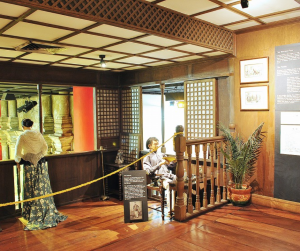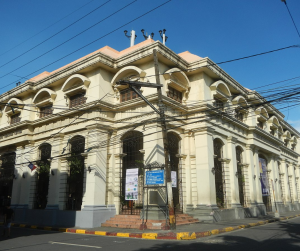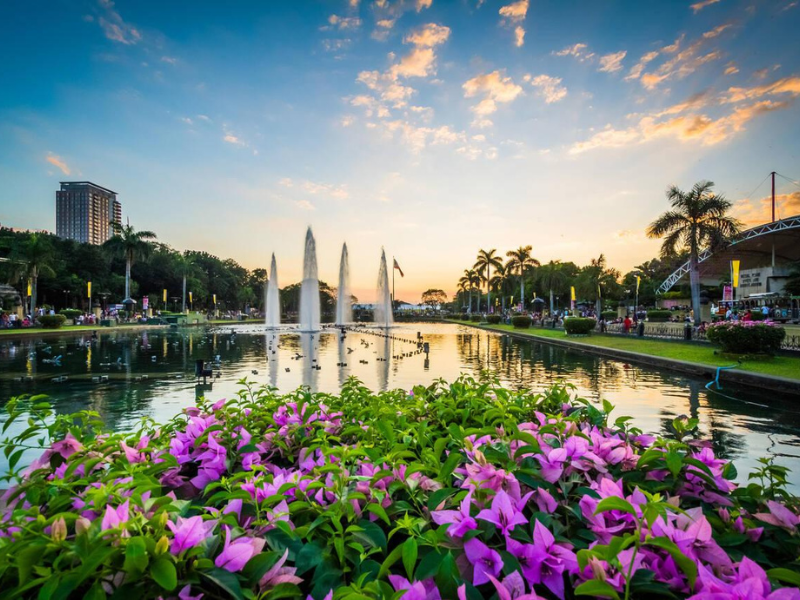Step back in time and explore the rich tapestry of history at Bahay Tsinoy. This cultural gem offers a glimpse into the vibrant heritage of the Chinese community in the Philippines. Immerse yourself in exhibits showcasing the intertwined narratives of two cultures. From ancient artifacts to modern displays, Bahay Tsinoy paints a vivid picture of the past, bridging gaps and fostering understanding. Uncover stories of resilience, tradition, and adaptation within its walls. Join us on a journey through time as we unravel the captivating tale of Bahay Tsinoy.
Chinese Legacy
Museum Overview
The bahay tsinoy museum, located in Intramuros, Manila, showcases the rich history and contributions of the Filipino-Chinese community. The museum’s establishment in 1999 marked a significant milestone in preserving the cultural heritage of the Chinese in the Philippines.
Visitors can explore various exhibits that highlight the cultural fusion between the Philippines and China, including artifacts, photographs, and interactive displays. The museum provides a glimpse into the lives of early Chinese immigrants and their descendants in the country.
One of the key attractions of the museum is its collection of ancestral portraits, which offer a visual narrative of the Filipino-Chinese lineage. educational programs and guided tours are available to enhance visitors’ understanding of the intertwined histories of the two cultures.
The museum serves as a testament to the enduring legacy of the Filipino-Chinese community and their significant role in shaping Philippine society. Through its engaging exhibits and educational initiatives, the bahay tsinoy museum continues to be a hub for cultural exchange and appreciation.
History and Significance
Chinese Influence
Chinese immigrants arrived in the Philippines as early as the 9th century, bringing their cultural practices and traditions. The Chinese influence on Filipino culture is evident in various aspects like cuisine, language, and customs.
- Pros:
- Enriched Filipino culture
- Introduced new culinary delights
- Cons:
- Some cultural clashes
- Language barriers initially
Cultural Integration
The bahay tsinoy serves as a symbol of the successful cultural integration between the Chinese and Filipino communities. It showcases a blend of Chinese architectural elements with Filipino design aesthetics.
- Cultural significance: Represents unity and harmony
- Architectural fusion: Combines two distinct styles seamlessly
Architectural Marvel

Photo by: https://www.eaglenews.ph/
The bahay tsinoy’s architecture is a sight to behold, characterized by its intricate details and vibrant colors. The structure typically features a courtyard, wooden panels, and a tiled roof.
- Key features:
- Courtyard for gatherings
- Wooden panels for aesthetic appeal
Planning Your Visit
Getting There
To reach bahay tsinoy, visitors can take a taxi or ride a jeepney to the museum’s location. The museum is conveniently situated in Intramuros, Manila’s historic walled city.
Visitors coming from outside Manila can also opt for public transportation such as buses or trains to reach the area. Once in Intramuros, the museum is easily accessible by walking or taking a short tricycle ride.
Best Time to Visit
The best time to visit bahay tsinoy is during weekdays to avoid the weekend crowds. Mornings are ideal for a quieter and more immersive experience at the museum.
Visiting during off-peak hours allows visitors to explore the exhibits at their own pace and fully appreciate the rich history and culture showcased at bahay tsinoy.
Exploring the Museum
Exhibits and Collections
The bahay tsinoy museum houses a diverse range of exhibits and collections showcasing the rich history and culture of the Filipino-Chinese community. Visitors can marvel at ancient artifacts, traditional clothing, and historical documents dating back centuries. The museum’s extensive collection provides a fascinating glimpse into the intertwined heritage of the two cultures.
Immerse yourself in the intricate details of Chinese-Filipino traditions through vibrant displays of pottery, artwork, and religious artifacts. The exhibits offer a unique opportunity to learn about the customs, beliefs, and practices that have shaped the Filipino-Chinese identity over generations. Each item tells a story, connecting the past with the present in a captivating narrative.
Interactive Experiences

Photo by: https://en.wikipedia.org/
Engage in hands-on activities and interactive experiences that bring the history of the bahay tsinoy to life. Visitors can participate in cultural workshops, traditional games, and storytelling sessions that offer a dynamic and immersive learning experience. These interactive elements allow visitors to actively engage with the museum’s content, fostering a deeper appreciation for Filipino-Chinese heritage.
Explore the museum’s interactive displays that utilize cutting-edge technology to enhance visitor engagement. From multimedia presentations to virtual reality experiences, these innovative features provide an exciting way to delve into the history and culture of the Filipino-Chinese community. Visitors of all ages can enjoy these interactive experiences, making the museum visit both educational and entertaining.
Guided Tours
Embark on a guided tour led by knowledgeable docents who offer insightful commentary on the exhibits and collections. Guided tours provide a structured and informative exploration of the museum, allowing visitors to gain a deeper understanding of the significance of each artifact. Docents share engaging stories and historical context, enriching the visitor experience with their expertise.
Experience a personalized tour tailored to your interests, whether you’re fascinated by ancient relics or modern cultural expressions. Guided tours offer a curated journey through the bahay tsinoy, highlighting key aspects of Filipino-Chinese history and heritage. Visitors can ask questions, interact with the guide, and delve deeper into specific areas of interest during these enriching tours.
| Category | Details |
| Overview | Cultural museum in Intramuros showcasing the history and contributions of the Filipino-Chinese community. |
| Historical Significance | Highlights the integration of Chinese culture in Filipino traditions since the 9th century. |
| Exhibits | Artifacts, traditional clothing, pottery, historical documents, ancestral portraits. |
| Interactive Features | Cultural workshops, storytelling sessions, interactive displays, and guided tours. |
| Best Times to Visit | Weekdays, especially mornings, for a relaxed and crowd-free experience. |
| Visitor Tips | Respect museum rules, avoid touching artifacts, use flash-free photography, and engage with docents. |
| Nearby Attractions | Intramuros, Fort Santiago, Manila Cathedral, Rizal Park. |
Visitor Tips
Do’s and Don’ts
- Do: Respect the museum’s rules and regulations to maintain the historical artifacts’ integrity.
- Don’t: Touch or tamper with the exhibits, as they are delicate and require preservation.
- Do: Take photos responsibly, ensuring not to use flash photography that can damage the items.
- Don’t: Bring in food or drinks inside the museum premises to prevent any accidents or spillage.
- Do: Engage with the knowledgeable staff for insights into the exhibits and history of bahay tsinoy.
Nearby Attractions
 When exploring bahay tsinoy, consider visiting nearby attractions to enhance your experience. Some notable places to visit include:
When exploring bahay tsinoy, consider visiting nearby attractions to enhance your experience. Some notable places to visit include:
- Intramuros: Explore the historic walled city showcasing Spanish colonial architecture.
- Fort Santiago: Discover the iconic citadel that played a significant role in Philippine history.
- Manila Cathedral: Visit the stunning cathedral known for its intricate design and rich history.
- Rizal Park: Enjoy a leisurely stroll in this urban park dedicated to Philippine national hero, Jose Rizal.
Frequently Asked Questions
What is Bahay Tsinoy, and why is it significant?
Bahay Tsinoy is a cultural museum located in Intramuros, Manila, dedicated to showcasing the history and contributions of the Filipino-Chinese community. It plays a vital role in preserving the rich heritage of Chinese immigrants in the Philippines and highlights their influence on Filipino culture.
What exhibits can visitors expect to see at Bahay Tsinoy?
Visitors can explore a variety of exhibits, including ancient artifacts, traditional Chinese-Filipino clothing, pottery, historical documents, and ancestral portraits. The museum also features interactive displays and workshops that offer a deeper understanding of Filipino-Chinese traditions and history.
What are the best times to visit Bahay Tsinoy?
The best time to visit Bahay Tsinoy is during weekdays, especially in the mornings, to avoid crowds. Visiting during off-peak hours allows for a more relaxed and immersive experience, providing time to fully appreciate the museum’s exhibits at a leisurely pace.
What activities can visitors participate in at Bahay Tsinoy?
In addition to viewing exhibits, visitors can engage in hands-on activities such as cultural workshops, traditional games, and storytelling sessions. The museum also offers guided tours led by knowledgeable docents, providing deeper insights into Filipino-Chinese history and culture.
Closing Thoughts
You’ve uncovered the rich Chinese legacy at Bahay Tsinoy, delved into its history and significance, learned how to plan your visit efficiently, explored the museum’s wonders, and picked up valuable visitor tips. Now, it’s time to immerse yourself in this cultural gem. Don’t miss the chance to witness history come alive and gain a deeper understanding of the Filipino-Chinese heritage. Let Bahay Tsinoy be your gateway to a world where stories speak louder than words.
Explore, engage, and embrace the fusion of two vibrant cultures at Bahay Tsinoy. Your journey awaits – step into a realm where the past intertwines with the present, leaving you enriched and inspired. Dive into this unique tapestry of narratives and let the spirit of Bahay Tsinoy ignite your curiosity and appreciation for the diverse tapestry of our shared history.

